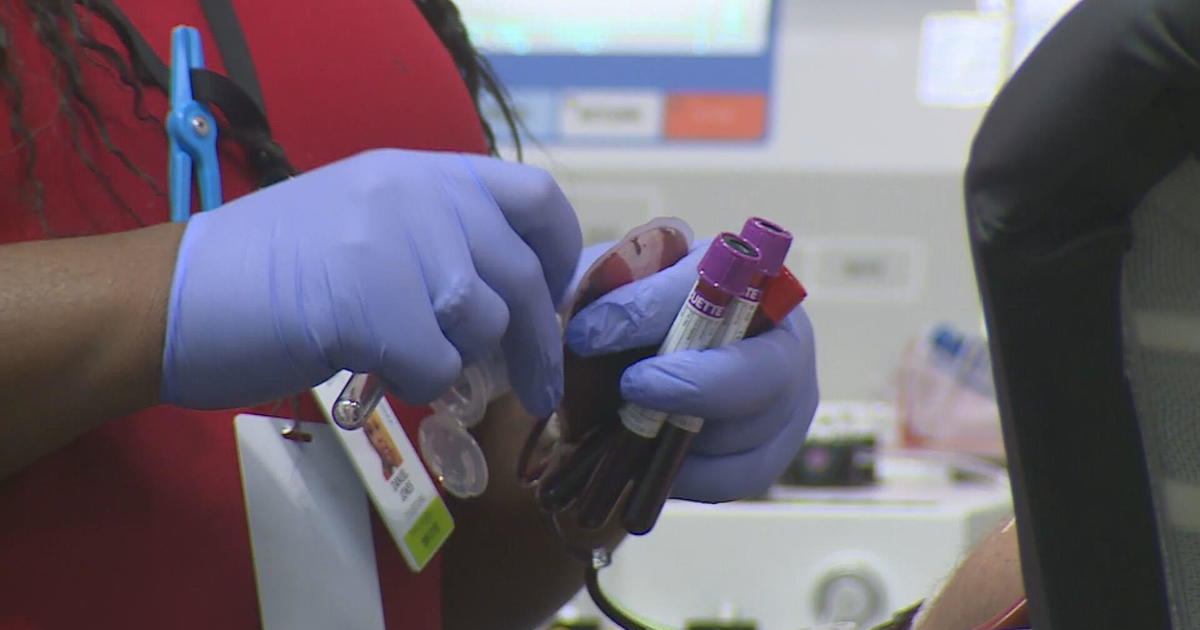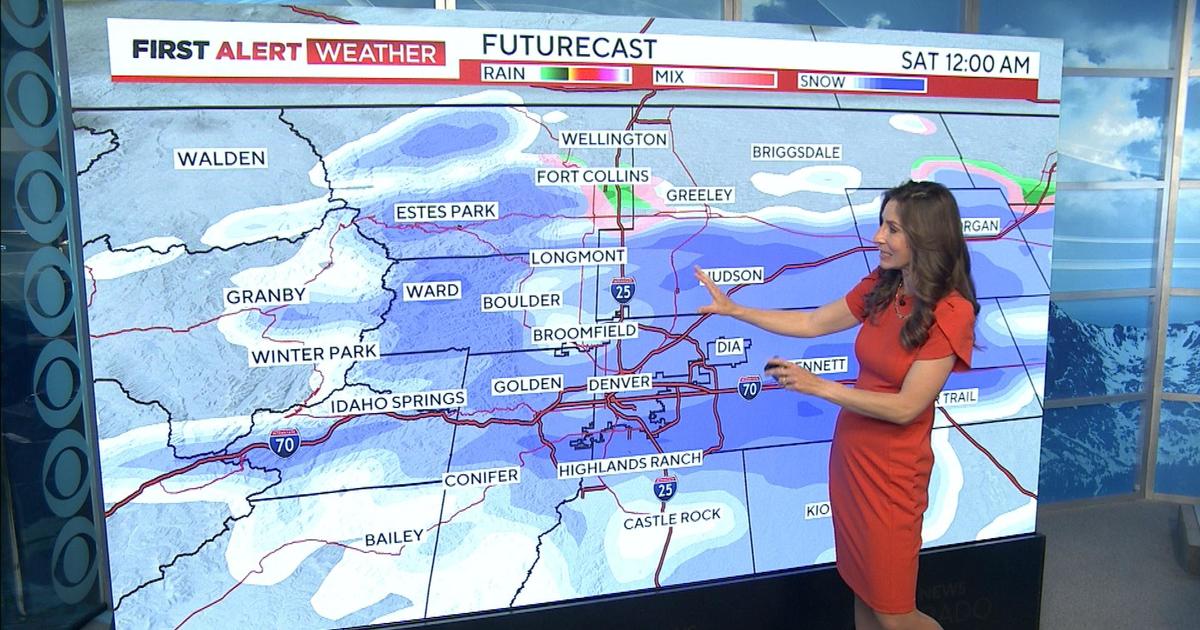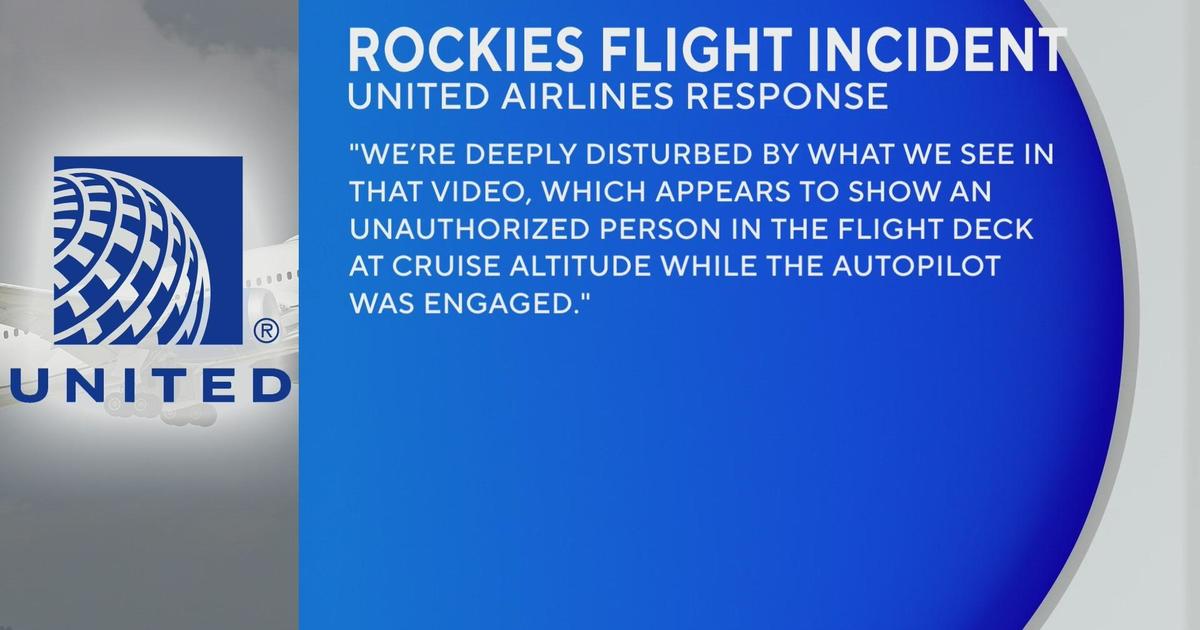From Giraffes To Jazz, Crowdfunding Offers Alternatives For Denver Groups
DENVER (CBS4) - On a recent Friday afternoon in Denver's RiNo neighborhood, Scott Mattson eagerly explained how his dream is nearing completion.
The Lakewood native offered a brief tour of a Prohibition-era building that will soon become Nocturne, a jazz club on 27th Street that he and his wife, Nicole, bill as "a modern take on a 1940s jazz & supper club."
At the door, curtains will add speakeasy-like mystery for patrons when they enter. Once inside, they'll spot the bar to their right, the highlight of a grand room that's punctuated by white marble floors. Farther in, jazz trios will perform from a raised stage. A curved staircase will lead to more seating on Nocturne's mezzanine. The space -- simultaneously intimate and airy -- will have "incredible acoustics," Scott promises.
It's a bit hard to picture, he admits -- what with the club's construction still in two-by-four frames and the sawdust smell heavy in the air. The stage, he says, is over by "where all that lumber is." Bags of something called "sweeping compound" and construction tools pepper the floor.
But the club is clear in his mind.
The Mattsons are about a month from opening Nocturne -- "fingers crossed," Nicole adds in a nod to ongoing construction and other costs.
Nocturne's story would be similar to any other project in the bustling RiNo neighborhood north of LoDo. But setting it apart is the Mattsons' capital campaign that secured a significant amount of money from the community. At first, Nicole says friends and family wanted to contribute but couldn't offer gobs of money.
"There were a lot of friends and family who said, 'I can't do a larger investment. But if I could help you just a little bit, I would be willing,' " she says.
That interest spurred the Mattsons to experiment with crowdfunding. As the Internet provides more tools and as regulations ease, countless small-business owners and organizations across the country are increasingly turning to strangers to help fund their endeavors. Crowdfunded projects raised more than $2.7 billion in 2012 across one million campaigns, according to massolution's recent Crowdfunding Industry Report.
RELATED: Business Ideas Can Turn Reality With The Help Of Complete Strangers
The Mattsons decided the still-nascent strategy merited a whirl. While well-known outfits like Kickstarter and Indiegogo offer a wealth of tools, Nicole says those out-of-the-box platforms were either too risky or limited. So they created their own.
In addition to small-business loans and other funding, the Mattsons raised roughly $30,000 from crowdfunding -- or about 10 percent to 15 percent of their total capital needs. By early December, they'd brought in $22,600 from the community.
Their platform is patron-themed. At the low end is the "Pennies from Heaven" funding option. For $25, backers receive a complimentary glass of champagne or a craft cocktail, a free dessert and the Mattsons' "heartfelt thanks."
But for $7,500 -- the highest level of funding -- investors will earn, among other perks, a private jazz brunch or dinner for 30 guests accompanied by a live jazz trio and 10 percent off all food and drinks for life. No one has given at that amount yet, Nicole says, but they've received a few gifts at the $3,000 mark. (See all funding options at Nocturne's site.)
So far, 54 people and organizations have contributed funding. Forty-two names will appear on the club's Founder's Wall, which will memorialize those who have given at least $350.
Nicole says partly funding Nocturne through the community provided a proxy for whether nearby residents would even walk into a local jazz supper club, much less invest in one.
"It does give you a little bit of that proof of concept -- seeing if you do have traction in the community," she says. "If it's only Aunt Susie that's interested in coming to this place, it doesn't really have legs."
The most exciting moment, Nicole says, arrived when they began receiving funding from strangers: "It started to get some buzz, get some momentum. Then we started to see some of the community funding actually coming from the community."
Now 80 percent of the way toward their community-funding goal, Nicole says she sees evidence their dream is viable.
"The neighborhood wants us there," she says.
A block away from Nocturne sits Zephyr Brewing Co., a testament to crowdfunding success. The Denver brewer dabbled in crowdfunding to help open its doors last Friday.
Zephyr hauled in a modest $6,111 from 47 backers to assist with staffing and décor costs. The brewer understood that crowdfunding can supplement a business plan -- not entirely support one -- says the co-founder of the crowdfunding platform that Zephyr used.
Mark Slattery, who created Denver-based CrowdBrewed in April 2013 with a business partner and is still just one of two employees, says crowdfunding isn't for every organization or small business.
He occasionally sees projects on his site fail because their creators haven't carefully crafted a strategy, and many exercise a cart-before-the-horse mentality by turning to crowdfunding too early.
Slattery advises entrepreneurs grow a network of supporters first.
"Crowdfunding has really changed from the initial concept of 'I have an idea. Let's see if it gets funded,' " he says. "Now it's, 'We have put in a lot of planning, time and effort to grow a business and to gain a following for that business and the last step of that puzzle is now the crowdfunding.' "
Deadlines inched close in December for some projects on CrowdBrewed. Early in the month, an outfit in Oregon called Wolves & People Farmhouse Brewery sought about $58,000 in crowdfunding. It raised nearly $50,000 -- 83 percent of its goal.
Because they fell short, the campaign's creators will pay a 7 percent flat fee to CrowdBrewed on all donations instead of the 5 percent that's charged to those that meet their goals. The brewery, Slattery says, will still keep the $50,000 for its operations. And donors will still receive their promised rewards. But it illustrates how crowdfunded campaigns must manage expectations.
Zephyr proved they had a safe plan, Slattery says: "We try to coach everyone to be very realistic about what they're going after."
That said, organizations with a lot of clout and a strong public image can roll the dice on crowdfunding. The Denver Zoo, for example, secured about $62,462 from the community to help construct a device that helps veterinarians treat and examine giraffes.
The gadget, called SNUGG for "Safe Nurturing Upright Gateway for Giraffes," allows vets to secure one of the zoo's four giraffes in an enclosure suitable for treatment. Zoo staff designed the SNUGG, which will cost about $100,000.
"We decided to go through crowdfunding with the giraffe SNUGG because it was a project that people could really wrap their minds around. It supported animal care, and it was something that all members of our community could see when they visit Denver Zoo," Hannah Yaritz, the zoo's individual philanthropy coordinator, said.
Of the $60,000 the zoo raised through the community, about a third of it came through LoveAnimals.org, a Denver-based crowdfunding site that's tailored to animal welfare organizations.
On Love Animals, 204 people donated, a number Yaritz said impressed her. She said the zoo is considering turning to Love Animals for future campaigns, but they haven't specifically targeted one yet.
She said it proves the success of drawing from the community.
But Sarah Timms, who is Love Animals' founder and CEO, says organizations should guard against Pollyannaish thinking: Sure, people love animals. And they donate, and they're on the Internet. But that doesn't equate to successful campaigns. In Colorado, for instance, there were four active campaigns listed on Love Animals on Monday afternoon.
None of them come close, however, to matching the Denver Zoo's success. Two want assistance for dogs' welfare, one asks for funds for parrot food and care, and another seeks to save imperiled prairie dogs. Deadlines for three of four loom in December; the other campaign ends Jan 1. The parrot project is proving the most successful of the four local campaigns, but it's raised just 8 percent, or $235, of the $3,000 it's seeking. It has 23 days left.
Timms points to a substantial difference between the successful, polished campaigns and those that need more massaging.
"The ones that are successful are always groups that tell a great story. They break it down for the donor. They present a problem with a solution. They don't just say things like, 'We need to prevent the extinction of elephants.' They would focus on particular elephants and make it manageable for the donors," she says.
Another one of Love Animals' most high-profile projects succeeded because it communicated its goals well, she said. That campaign raised $56,000 for Chimp Haven, a sanctuary in Shreveport, Louisiana, for chimpanzees released by the government after they were test subjects in biomedical research. Clint Eastwood's daughter, Alison, spearheaded the effort.
The zoo, of course, also benefitted from its very public profile and media coverage of the SNUGG project. Beyond that, however, the zoo was effective in explaining what exactly the SNUGG does, how it aids in giraffe care and why zoo patrons should care.
Just because donors give relatively small amounts -- say, 15 or 20 bucks -- to a project doesn't mean they don't want to know their money is well-spent.
"Millennial donors are not opening their wallets anymore if they don't know where their $2 or $10 is going," Timms says.
Campaigns must also employ social media tactics and other tools to reach a wide as an audience as possible, she says. Merely creating a campaign isn't enough. Organizations that sit back to watch the money roll in will be disappointed.
"There is a big misconception that if you put your project up on crowdfunding, there are just millions of people waiting to give," Timms says. "That isn't how crowdfunding works."
But Timms, who created Love Animals because it was her "passion to do something massive to help animals on a grand scale," says her platform will succeed for people and organizations who approach their projects with a similar fervor.
"I feel like I can help every animal because I can help every animal nonprofit be a better fundraiser," she says. As a nonprofit, Love Animals doesn't charge organizations.
Crowdfunding isn't just for jazz and giraffes. Civic organizations are employing crowdsourcing to help with projects.
The Downtown Denver Partnership, for instance, is nearing the end of a crowdfunding campaign to raise $35,000 for the design phase of a protected bike lane on Arapahoe Street. Design of the project will cost roughly $155,000, the partnership said. The city of Denver is funding the bike lane's construction, a separate cost.
By Dec. 3, more than 175 individual organizations and people donated $15,887 toward the design costs. The project has approximately another $8,500 in outstanding commitments, says Aylene McCallum, the partnership's senior manager for transportation and research. Two other organizations -- the Gates Family Foundation and the Downtown Denver Business Improvement District -- have given $120,000 toward design costs.
Downtown Denver's first protected bike lane, which essentially shields bicycle traffic from cars and pedestrians, opened in May on 15th Street. Two others on Lawrence and 14th streets are slated for completion in 2015.
But the impetus behind the crowdfunding angle isn't to encourage more crowdfunding, according to McCallum.
"We do not see this as a standard operating procedure for funding infrastructure projects like this moving forward," she says. "We are using this process a demonstration project to show the city that downtown Denver employees and downtown Denver businesses are very supportive of these types of projects."
Calling crowdfunding a method to "catalyze" interest and investment in future projects, McCallum says the effort is more symbolic than pragmatic, and the partnership doesn't want to "wear on our supporters" by launching crowd campaigns repeatedly.
Rather, it helps channel the public's voice, she says: "This is another way to vote for projects, to say, 'Hey, this is how I want my tax dollars invested in the future. I'm going to put my own money behind it like my vote.' "
- Written by Tim Skillern for CBSDenver.com





